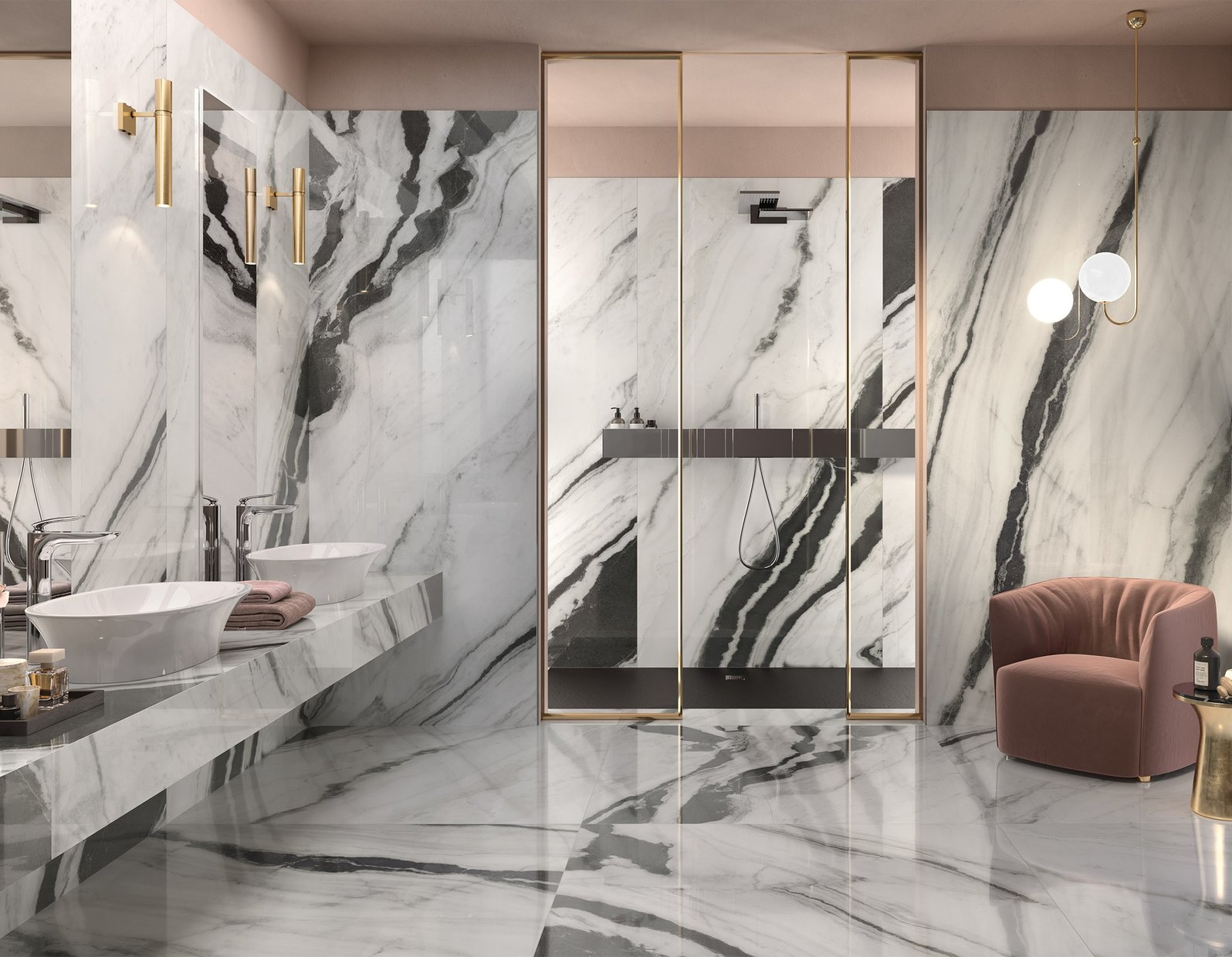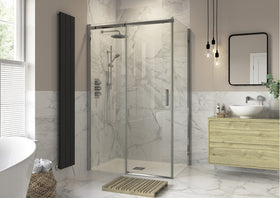
Marble Effect Tiles: A Cost-Effective Alternative to Natural Stone
Marble effect tiles have gained popularity in recent years as a cost-effective alternative to natural stone. With advancements in tile manufacturing technology, it has become possible to replicate the luxurious look of natural marble at a fraction of the cost. In this article, we will explore the advantages of marble effect tiles, compare them with natural stone, discuss the installation process, popular applications, durability, and maintenance tips. So, let's dive in and discover why marble effect tiles are an excellent choice for your next home improvement project.
What are marble effect tiles?
Marble effect tiles are ceramic or porcelain tiles that mimic the appearance of natural marble. These tiles are designed using advanced printing techniques that replicate the intricate veining and patterns found in real marble. The result is a stunning visual effect that adds elegance and sophistication to any space.
Marble effect tiles are manufactured using a combination of high-quality raw materials and innovative printing technologies. The tiles are available in various sizes, shapes, and finishes, allowing homeowners to choose the perfect option for their specific needs. Whether you prefer a polished, honed, or matte finish, there is a marble effect tile that can suit your aesthetic preferences.
Why choose marble effect tiles?
Marble effect tiles offer several advantages over natural stone, making them an attractive choice for homeowners and designers alike.
- Affordability: One of the primary advantages of marble effect tiles is their cost-effectiveness. Natural marble can be expensive, especially when considering the extraction, transportation, and installation costs. Marble effect tiles, on the other hand, provide the same luxurious look at a fraction of the price.
- Variety and Design Options: Marble effect tiles offer a wide range of design options. Manufacturers can replicate different types of marble, including Carrara, Calacatta, and Emperador, allowing you to choose the exact style and color that matches your aesthetic vision.
- Durability: Marble effect tiles are highly durable and resistant to scratches, stains, and moisture. Unlike natural marble, they do not require periodic sealing, making them easier to maintain in the long run.
Marble Effect Tiles v Natural Stone
To better understand the benefits of marble effect tiles, let's compare them with natural stone in various aspects.
Cost
Natural marble is known for its beauty and elegance, but it often comes with a hefty price tag. The cost of natural marble can vary significantly depending on the quality, rarity, and sourcing. On the other hand, marble effect tiles offer a cost-effective alternative without compromising on aesthetics.
Maintenance
Natural marble requires regular maintenance to preserve its beauty. It is susceptible to staining, etching, and scratching. Additionally, natural marble needs periodic sealing to protect it from moisture and spills. In contrast, marble effect tiles are relatively low maintenance. They are resistant to stains, scratches, and moisture, and do not require sealing.
Variety and Design Options
Natural marble is limited in terms of color and veining options, as it is a natural product formed over thousands of years. In contrast, marble effect tiles offer a wide range of design options. Manufacturers can create tiles with various colors, veining patterns, and finishes, allowing homeowners to achieve their desired aesthetic without the limitations of natural stone.
Installation Process of Marble Effect Tiles
Installing marble effect tiles requires careful planning and execution to ensure a flawless result. Here are the key steps involved in the installation process:
Surface Preparation
Before installing marble effect tiles, the surface needs to be properly prepared. This involves ensuring that the subfloor or wall is clean, level, and free from any debris. Any existing tiles or flooring materials should be removed, and the surface should be thoroughly cleaned and dried.
Tile Installation
The next step is to lay the marble effect tiles. It is essential to use high-quality adhesive and follow the manufacturer's instructions for proper application. The tiles should be evenly spaced and aligned to create a seamless look. A tile cutter or wet saw may be required to cut tiles to fit around corners or obstacles.
Grouting and Sealing
Once the tiles are installed, the grouting process begins. Grout is used to fill the gaps between tiles, ensuring stability and preventing moisture penetration. After the grout has dried, the tiles should be sealed to protect them from stains and spills. Sealants also enhance the longevity and durability of marble effect tiles.
Popular Applications of Marble Effect Tile
Marble effect tiles can be used in various applications throughout your home. Here are some popular uses:
Flooring
Marble effect tiles add a touch of luxury to any room when used as flooring. Whether in the living room, kitchen, or bathroom, these tiles create an elegant and timeless look. With their durability and resistance to wear, they are suitable for high-traffic areas.
Kitchen Backsplash
Installing marble effect tiles as a kitchen backsplash can instantly elevate the overall aesthetic. The glossy finish and intricate veining patterns add depth and character to the space. Additionally, marble effect tiles are easy to clean, making them an ideal choice for kitchen applications.
Bathroom Walls
The bathroom is another area where marble effect tiles shine. These tiles can transform an ordinary bathroom into a spa-like retreat. Their moisture-resistant properties make them a practical and stylish choice for shower walls or vanity backsplashes.
Durability and Longevity of Marble Effect Tiles
Marble effect tiles are known for their durability and longevity. Unlike natural marble, which is susceptible to cracks, stains, and wear, these tiles offer enhanced resistance to scratches, chipping, and fading. With proper installation and maintenance, marble effect tiles can withstand the test of time and retain their beauty for years to come.
Care and Maintenance Tips for Marble Effect Tiles
To keep your marble effect tiles looking their best, follow these care and maintenance tips:
- Regularly sweep or vacuum the tiles to remove dirt and debris.
- Use a mild, pH-neutral cleaner specifically designed for tile surfaces.
- Avoid using abrasive cleaners or scouring pads that can scratch the tiles.
- Wipe up spills promptly to prevent staining.
- Consider applying a sealant every few years to maintain the tiles' protective layer.
By following these simple steps, you can ensure that your marble effect tiles stay in excellent condition and continue to enhance your living space.
Conclusion
Marble effect tiles offer a cost-effective and visually stunning alternative to natural stone. With their affordability, variety of design options, and durability, these tiles have become a popular choice for homeowners and designers alike. Whether used for flooring, kitchen backsplashes, or bathroom walls, marble effect tiles can elevate the aesthetic of any space.
In addition to their aesthetic appeal, marble effect tiles are low maintenance and resistant to stains, scratches, and moisture. Their installation process is straightforward, and they can be easily customized to suit individual preferences. With proper care and maintenance, these tiles can stand the test of time and continue to enhance your home for years to come.
So, if you're looking to add a touch of elegance and luxury to your space without breaking the bank, consider marble effect tiles as a cost-effective alternative to natural stone.
FAQs
Here are some frequently asked questions about marble effect tiles:
1. Are marble effect tiles suitable for high-traffic areas?
Yes, marble effect tiles are highly durable and can withstand high-traffic areas. They are a practical choice for entryways, kitchens, and living rooms.
2. Can marble effect tiles be used in wet areas like bathrooms?
Absolutely! Marble effect tiles are moisture-resistant, making them an ideal choice for wet areas such as bathrooms and showers.
3. Do marble effect tiles require sealing?
No, marble effect tiles do not require periodic sealing like natural marble. However, it is recommended to seal the grout lines for added protection.
4. Can marble effect tiles be installed on existing tiles?
Yes, marble effect tiles can be installed on existing tiles. However, it's important to ensure that the surface is clean, level, and in good condition before installation.
5. Can marble effect tiles be used outdoors?
While marble effect tiles are primarily designed for indoor use, there are specific outdoor-rated options available. It's best to consult with the manufacturer or a tile professional for recommendations on outdoor applications.
With these FAQs, we hope to address some of the common queries you may have had regarding marble effect tiles. If you're considering these tiles for your next home improvement project, consult with a tile expert or supplier to find the perfect option for your needs.


